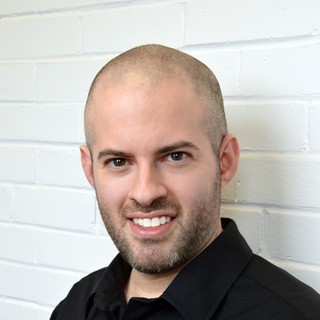On June 11, 2016, Omar Mateen, who had pledged allegiance to ISIS, killed 49 people at Pulse, a gay nightclub in Orlando. In the aftermath of the incident, a temporary memorial was set up. Last month, the onePULSE Foundation selected the winning design for the National Pulse Memorial & Museum.
That’s right: In addition to a memorial, there will be a museum.
While we can all agree a memorial is certainly appropriate, I was curious about the inclusion of a museum in the design program and dug deeper into what this was all about. First, I researched whether any other mass shootings in the past twenty years had created or proposed a museum. If there was, I couldn’t find them. Why does the OnePULSE Foundation believe this shooting requires a museum? And this isn’t a small one-story museum either, it’s a spiraling tower, with vertical gardens, public plazas, and a rooftop promenade—nothing subtle about it.
Beautiful event hosted by @onePULSEorg to unveil the design for the National @pulseorlando Memorial and Museum! The legacy of the 49 angels taken by hate will be remembered and celebrated for generations to come. Just WOW! 🏳️🌈#WeWillNotLetHateWin #ForThe49 #HonorThemWithAction pic.twitter.com/6AKTJqjwQp
— Rep. Carlos G Smith (@CarlosGSmith) October 30, 2019
PJ Media contacted the foundation for more information, but no response was provided before this article was published.
While the foundation’s mission statement is clearly worded to say the Pulse shooting affected the entire community, it also says it “was both a terrorist act and a hate crime” targeting the LGBT community. But while the shooter had pledged allegiance to ISIS, and the shooting was undeniably a terrorist act, when you read the onePULSE Foundation’s website, there appears to be a lot more focus on the implication that the shooting was an anti-LGBT hate crime. The credo “We will not let hate win” is repeated many times across the site.
However, the shooting wasn’t about anti-LGBT hate. As Vox reported in April of 2018, “There’s now conclusive evidence that the shooter wasn’t intending to target LGBTQ people at all.”
That evidence is explained in a motion on behalf of the shooter’s wife’s, Noor Salman, filed at the United States District Court, Middle District of Florida, Orlando Division.
Salman’s lawyers asked the court to rule as inadmissible the argument that Mateen targeted the LGBT community.
“The veracity of Salman’s statements is the predicate for arguing that the attack on the Pulse nightclub constituted a premeditated attack on the gay community, as opposed to a random target selected by Mateen,” her lawyers wrote. “As such, the Government must assure the Court in advance that it intends to put forward facts and pursue a line of argument that Pulse was a premeditated target. References to an attack on the gay community have no foundation in the expected evidence and are therefore improper in the Government’s opening statement.”
In short, Omar Mateen, after discovering a high level of security at his original target, looked for a random Orlando nightclub to target. As Vox noted, “This evidence dramatically changes the mass shooting’s narrative; politicians and individuals across the political spectrum had positioned it as an anti-LGBTQ hate crime. Instead, the new evidence suggests, the Pulse nightclub shooting was intended as revenge for US anti-terror policies abroad.”
Despite this, the foundation appears intent on perpetuating the false narrative that the Pulse nightclub targeted by the shooter for being a gay nightclub. And the proposed museum will be the epicenter of that misinformation campaign. According to the competition background information, the museum program will:
- Communicate the events of June 12, 2016
- Address issues of intolerance
- Address the history of LGBTQ+ spaces and their importance
- Address inclusion and diversity
- Explore how such attacks can be prevented systemically
- Examine how to make the world a more empathetic and compassionate place
- Inspire change, start conversations in new places and serve as catalyst for global discussion and discourse
That doesn’t sound like a museum about a terrorist attack inspired by revenge over United States anti-terror policies; it sounds like a museum about an LGBT hate crime that wasn’t.
The foundation didn’t even attempt to be subtle in their Request for Qualifications (RFQ) from interested firms. In the RFQ, it is specifically stated that “Expertise on issues affecting the global LGBTQ+ community will be considered a plus.” This seems to blatantly contradict the mission statement that the mass shooting affected more than just the LGBTQ+ community.
There’s something unsettling about the LGBT community trying to assume “ownership” of the shooting as an incident that affected them above all other communities. Could you imagine someone arguing that the 9/11 attacks was just an attack on New York, not the United States?
The Orlando community absolutely should build a permanent memorial to honor the lives lost and affected by the shooting, but the museum portion of the project seems intent on doing more harm than good with a mission based on a lie.
While there are other memorials for mass shooting victims, there do not appear to be any other museums for mass shooting events. Why is the Pulse shooting different from other mass shootings that there should be an entire museum? Based on the materials provided by the foundation, it’s because they feel they have an opportunity to “have a conversation” with the community about anti-LGBT violence, even though that’s not what the Pulse shooting was. The shooting was a response to U.S. anti-terror policies overseas. The attack was an attack on America, not the LGBT community, and it’s shameful the way the onePULSE Foundation is trying to make it all about the latter.
_____
Matt Margolis is the author of Trumping Obama: How President Trump Saved Us From Barack Obama’s Legacy and the bestselling book The Worst President in History: The Legacy of Barack Obama. You can follow Matt on Twitter @MattMargolis












